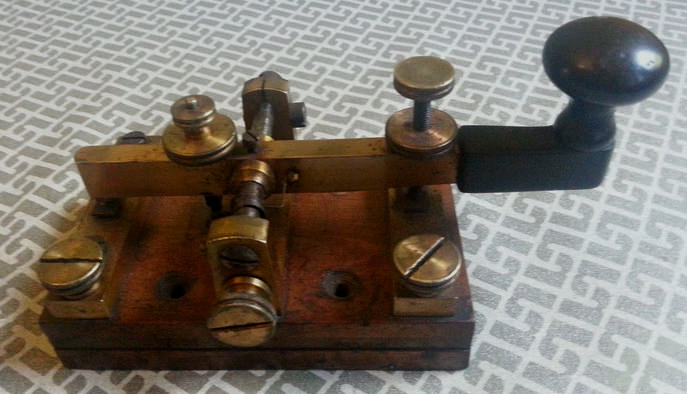
By iZ0KRC
https://iz0krc.jimdo.com/
I'm very happy to have find and study this faboulous old German key.
To read more info or saw more photos, go to Web page dedicate to the German key
:
https://straight-cwcorner.jimdo.com/german-key/
In Order, Gurlt, Kruger and Hartman & Braun.
For the last one factory, Hartman & Braun I've write a brief history on Tumblr :
http://cw-corner.tumblr.com/post/164302316404/hartmann-braun-ag-frankfurt
GURLT Key

KRUGER Key
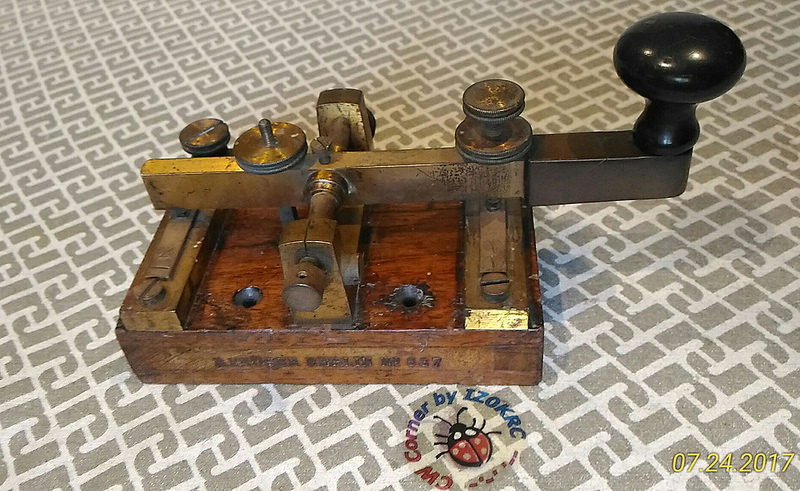
HARTMANN & BRAUN Key
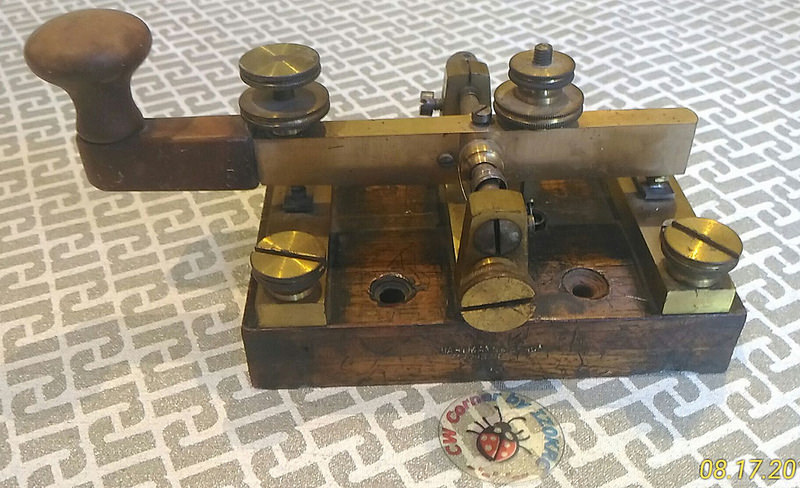
Below you will see a few photo of an early Argentinian key.
I've found this info trought a Web-site of Peter DK7JC,
link :
https://picasaweb.google.com/117403154439667883789/KeysWVELU?noredirect=1#5115923719832544562
A very early key and also very simple, made in 1897 and used in Argentinian
Telegraph office.
This key don't have possibilty to ragulate a spring contrast, like early
camelback key.
It have base in mahogany wood, hardware is brass and knob is made by a pieces of
horn or bond.
Under have a S/N 16.
I don't know the S/N of Peter DK7JC, but i tink don't is arrived today many of
this key...
Thanks for your attention.
73 de Claudio.
_______
Sotto potete vedere alcune foto dell'ultimo arrivato.
Si tratta di un vecchio tasto telegrafico Argentino, datato 1897 e utilizzato
presso gli uffici telegrafici dello Stato.
Ho trovato conferme sulla sua origine da Peter DK7JC che possiede il medesimo
tasto, descritto al seguente link :
https://picasaweb.google.com/117403154439667883789/KeysWVELU?noredirect=1#5115923719832544562
Un tasto molto semplice al pari dei primi Camelback, non c'è possibilità diretta
di regolare la forza della molla.
Il tasto ha una base in legno di mogano, l'Hardware è in ottone ed il pomello è
in ricavato dalla tornitura di un corno od osso.
Sotto la base vi è il numero di serie N°16.
Non conosco il numero seriale del tasto di Peter DK7JC, ma credo che a noi oggi
di questo semplice tasto, ne siano arrivati pochi esemplari.
Grazie per l'attenzione.
73 de iz0krc Claudio.
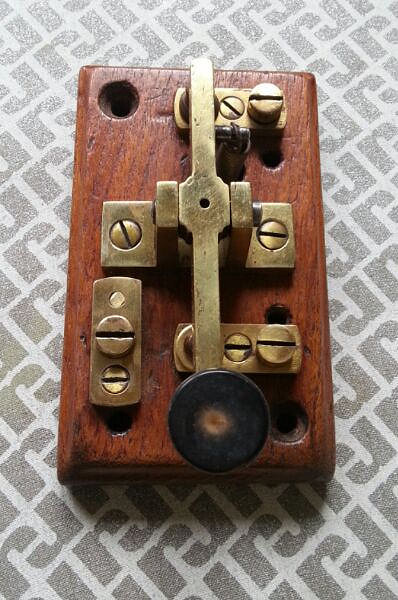
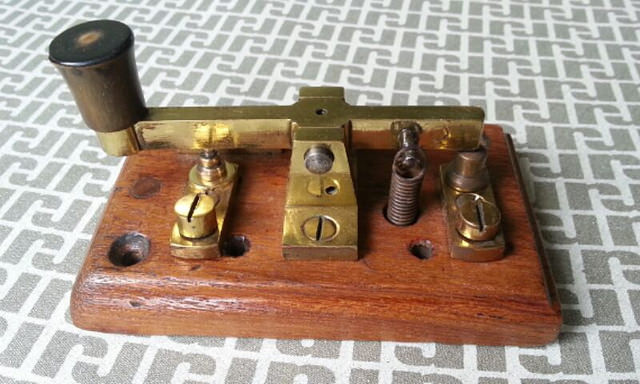
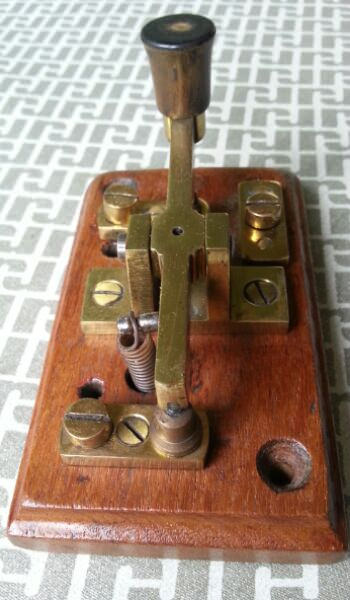
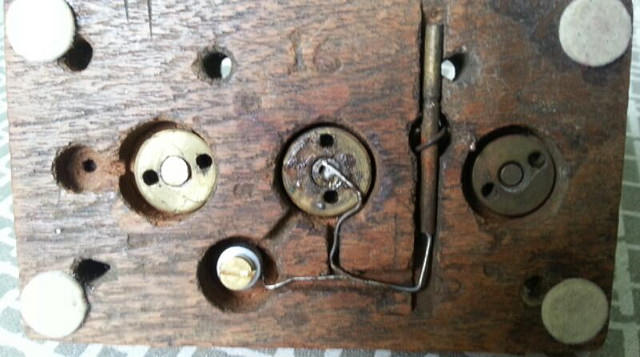
Some time ago I had an auction for Italian postal key.
The seller has not set in the description the measure of key, probably unaware
of the real dimensions of a common postal key...
When the package arrived, I was amazed at the realization.
Equal in all respects to a common key used in Italian post offices until the
'60s.
The craftsman has put all his skills, even the Knob was made of bone, like the
very eraly keys produced atthe end '800 centhury.
The details is very fine. Her insert the three bushings brass inlaid in the
wooden base,and all the contacts under the base are completely wired.
A true fine work of art.
_______
Miniatura di Tasto telegrafico postale Italiano.
Qualche tempo fà ho avuto un'asta per un tasto postale italiano.
Il venditore non ha inserito nella descrizione le misure del tasto, con molta
probabilità ignaro delle reali dimensioni di un comune tasto postale.
Quando il pacco è arrivato, sono rimasto meravigliato della realizzazione.
Uguale in tutto e per tutto ad un comune tasto utilizzato negli uffici postali
italiani sino agli anni '60.
L'artigiano ci ha messo tutta la sua abilita, persino il pomello è stato
realizzato in osso, come i primi tasti telegrafici postali di fine '800.
I dettagli si spingono sino ad inserire le tre boccole in ottone intarsiate
nella base di legno, tutti i contatti sotto la base sono perfettamente cablati.
Una vera opera d'arte.
Il tasto miniatura è ridotto del 40% rispetto l'orginale.
73 de iz0krc Claudio.
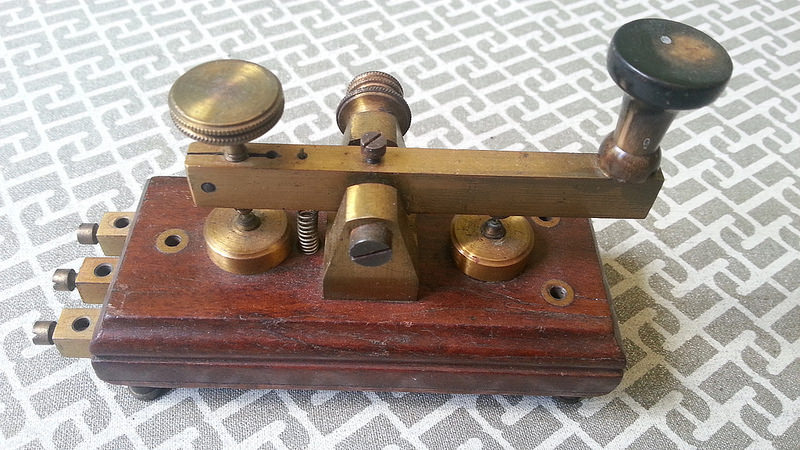
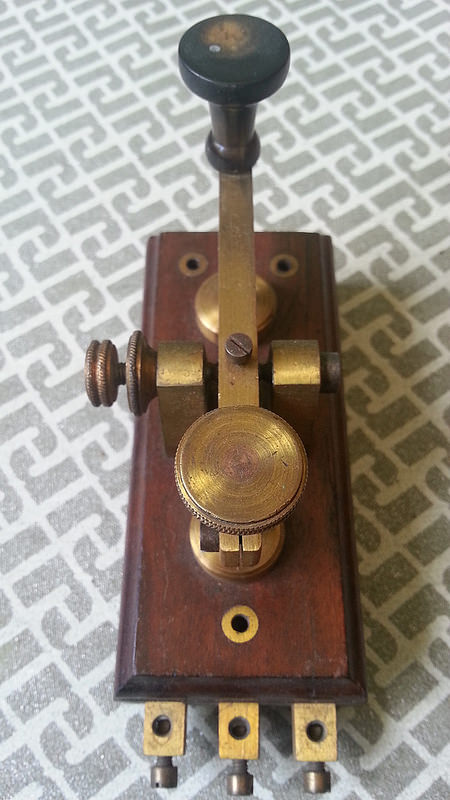
Original Italian postal key, with miniature key.
The minature is reduce 40% off.
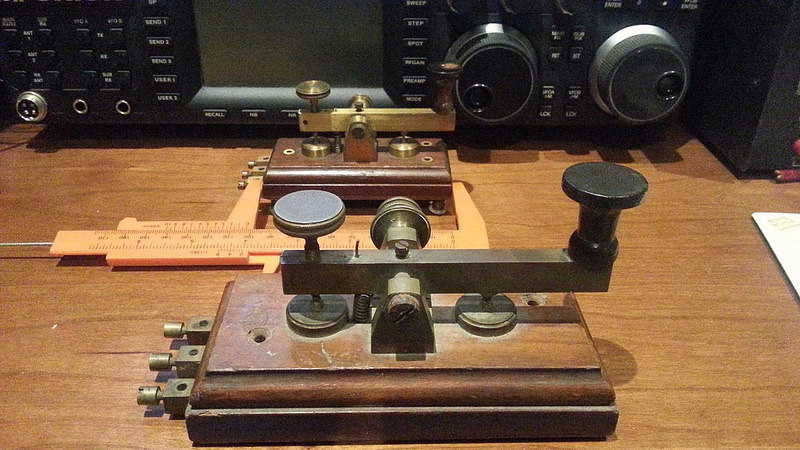
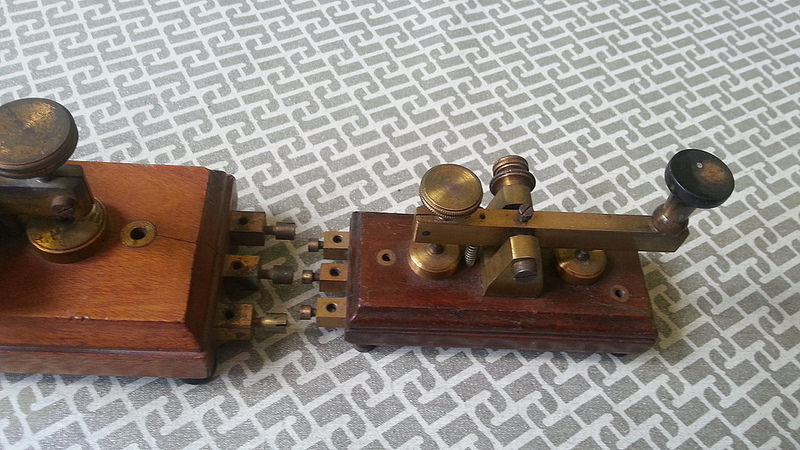
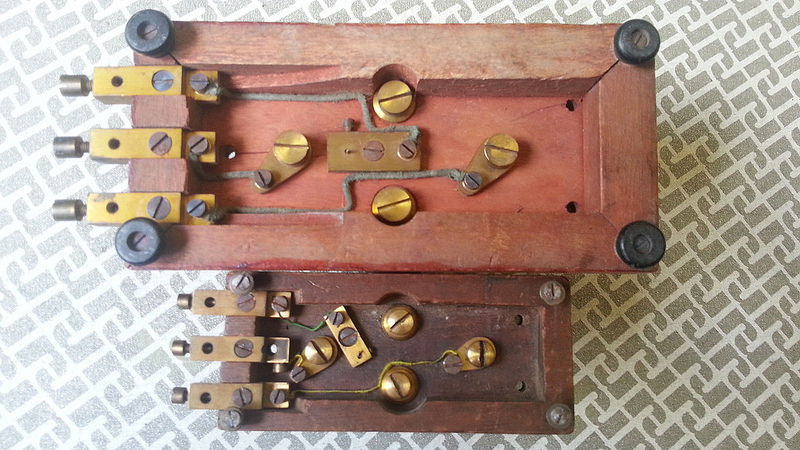
I'm especially proud to have recovered this early telegraph key belonged to
the central Post Office of Ancona city.
The fate would have it, after 70 years the key return to the country home.
At the end of Second World War, (1944), just after the release of Ancona by the
Allied forces, the key in the picture, along with other instruments telegraph
was requisitioned by an official of the Royal Sings.
I noticed the key in sale on e-bay, in the description, very sparse, have write
that the key had belonged to the Royal Italian Post office in Ancona.
So I asked to the seller if he could kindly explain me if the key really came
from Ancona, and which office it comes ?
Guglielmo Marconi conducted experiments in 1904 from the city of Ancona, the
station is on top of "Cappuccini" Hill.
(Video of Marconi's experiments in Ancona) link: https://www.youtube.com/watch?v=9vVgTb1VuFM
After my request, the seller kindly sent me a note togheter the key, and
descpbed very clear his war campaign and in the final of the letters, there is a
confirmation that the key comes precisely from the central office of Real Post
into the Ancona city.
Under the history of the postal building and frontal building Littorio, and some
other images of old Ancona.
Sono particolarmente orgoglioso di aver recuperato questo tasto telegrafico
appartenuto all'uffico postale centrale della città di Ancona.
La sorte ha voluto che dopo 70 anni anni il tasto è riuscito in modo
rocambolesco a ritornare in patria.
Alla fine della seconda guerra mondiale, subito dopo la liberazione di Ancona da
parte delle forze alleate, il tasto in foto, insieme ad altri strumenti
telegrafici è stato requisito da un ufficiale del Reale esercito, trasmissioni
Inglese "Royal Sings".
Ho notato il tasto in vendita su e-bay, nella descrizione, molto scarna, si
comprendeva che il tasto era appartenuto alle Reali Poste Italiane di Ancona.
Ho chiesto quindi al venditore, se cortesemente poteva spiegarmi se realmente il
tasto proveniva da Ancona, è da quale ufficio, considerato che Guglielmo Marconi
condusse nel 1904 degli esperimenti proprio dalla città di Ancona, dal Monte dei
Cappuccini.
Video degli esperimenti di Ancona, link : https://www.youtube.com/watch?v=9vVgTb1VuFM
Dopo tale richiesta, gentilmente il venditore mi ha inviato insieme al tasto una
nota dove mi descriveva la sua campagna di guerra ed in fine della lettere, vi è
la conferma che il tasto proviene proprio dall'ufficio centrale delle poste di
Ancona.
Sotto la storia del palazzo delle poste e del prospicente Palazzo Littorio, con
alcune immagini d'epoca di Ancona.
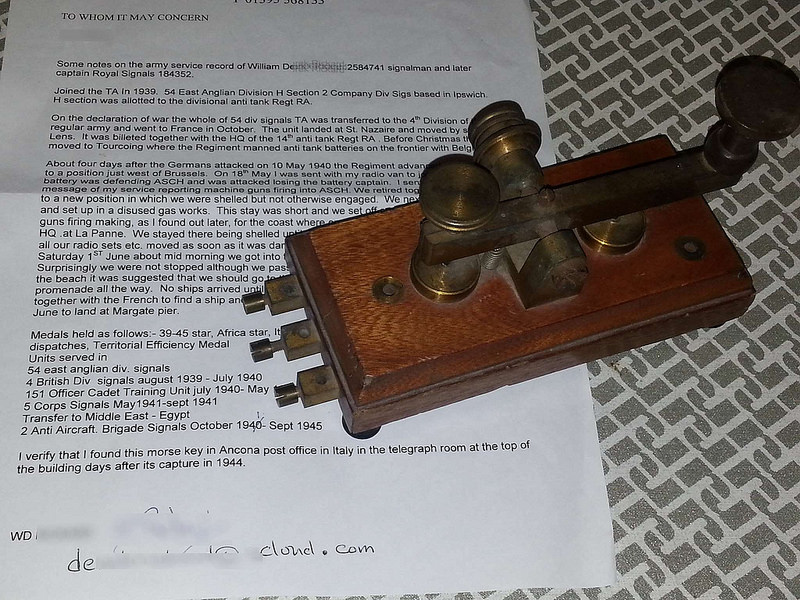
Old photographs of the place of Italian Royal Post office Palace and overlooking building Lictors, now so called People building
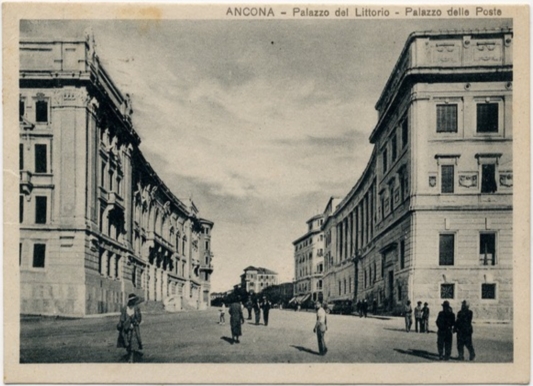
Postal office building
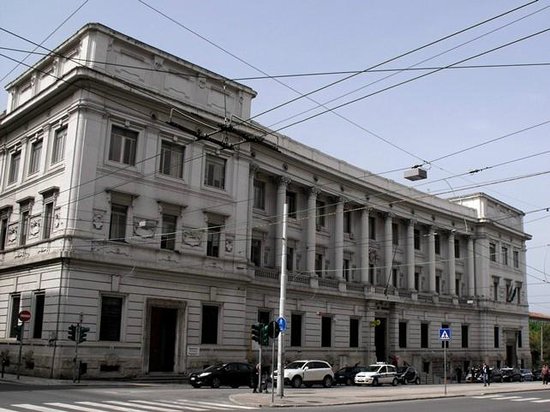
The "newest" Post Office building in Ancona, was officially inaugurated in
the year 1932 during the Fascist period, the maker was architect Guido
Anconetano Skittles,
Skittles realize them in the Palace, followed in the footsteps of his teacher
Arch. Giuseppe Sacconi - author of the Vittoriano building in Rome - The postal
building dide to a slight curvature of the facade, embellishing with a series
big towering columns from Neo-classical style.
The building was refubished in the year 1972 after the earthquake that struck
Ancona, the palace has kept intact and faithful inside the original stucks.
Il “nuovo” Palazzo delle Poste di Ancona, fù inaugurato nell’anno 1932 durante
il Ventennio fascista, ad opera dell’architetto Anconetano Guido Birilli,
Birilli nel realizzarle il Palazzo, seguì le orme del suo maestro Giuseppe
Sacconi – autore del Vittoriano di Roma – dide al Palazzo una leggera curvatura
della facciata, abbellendo con una serie di colonne imponenti di chiaro stile
Neo classico.
Ristrutturato nel 1972 dopo il terremoto che colpì Ancona, il palazzo ha
mantenuto intatti e fedeli al suo interno gli stucchi originali .
Littorio Building, now so called The People building.
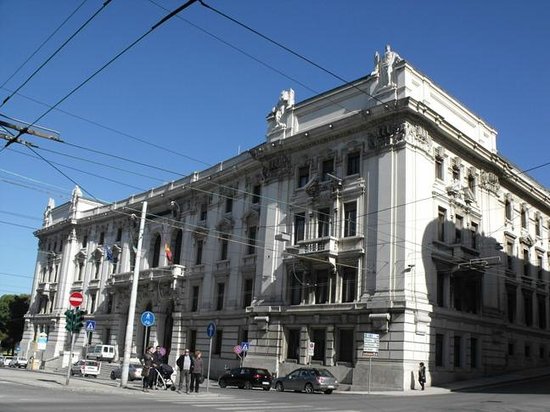
The Littorio Palace is facing to the Post Office building. built during the Fascist period from the architect Amos Luchetti Gentiloni, famous for scoring other works in the Republic of San Marino.
Interesting and functional learning set produced by English Gamage.
The set, by means of a switch can detect the manipulation by a buzzer, or by
optical signals.
Note the large lens concentrator used for the optical singals, which allows to
focus the light beam on a wall, to be able to "read" the morse code.
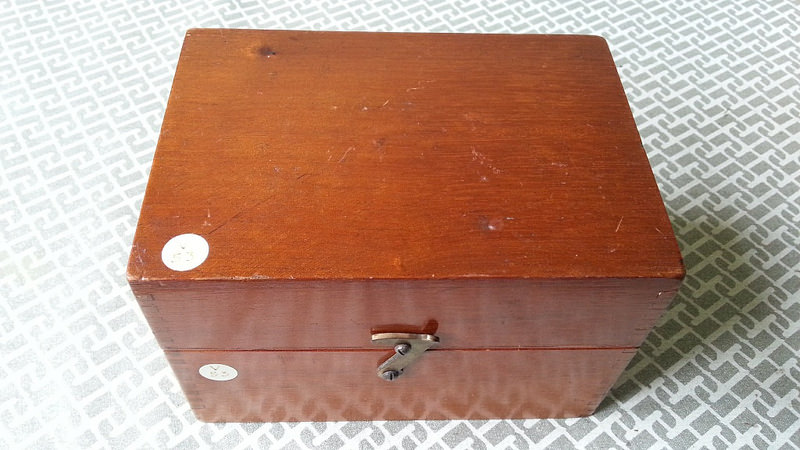
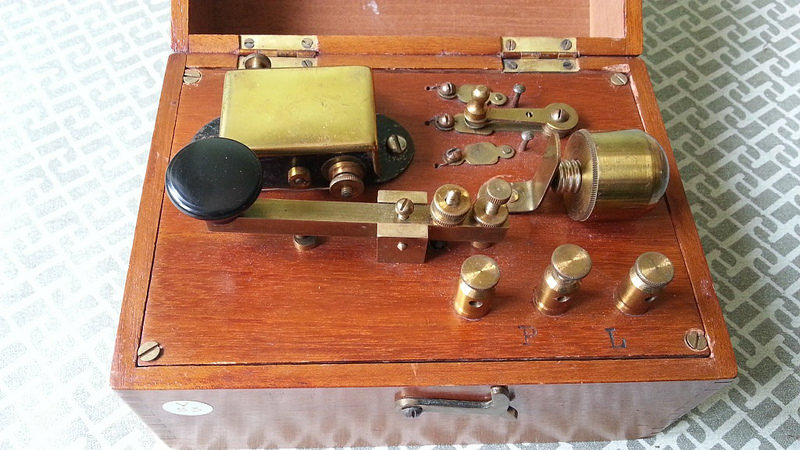
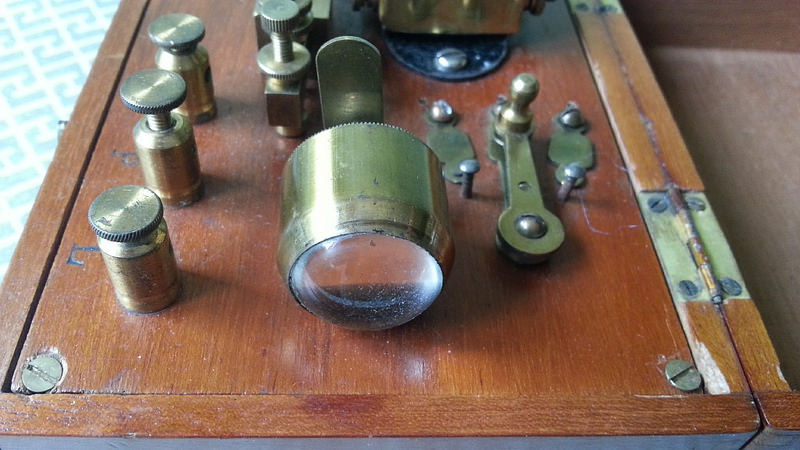
The kit is exposed to the museum in East Midland UK: http://www.museumoftechnology.org.uk/expand.php?key=572
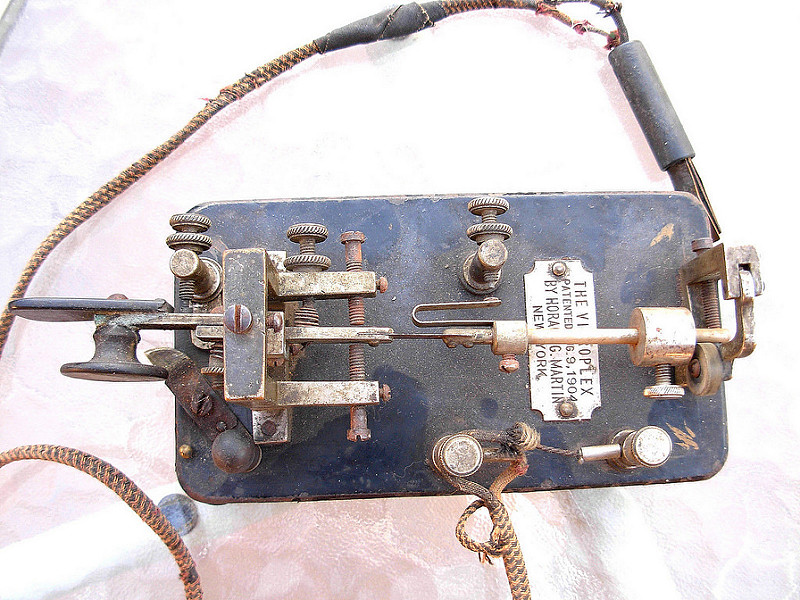
Early Martin Vibroplex with plate A1, aprox. 1905.
Do you see in the right corner a complete "flower", very particular.
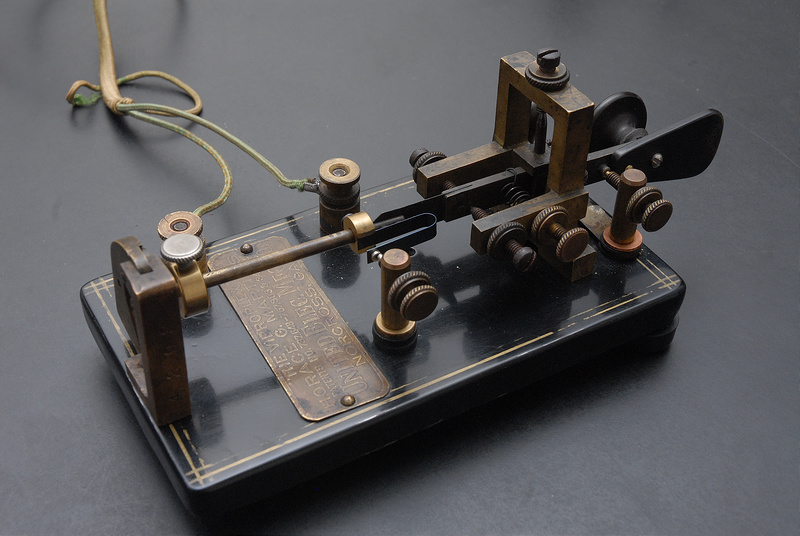
Martin Vibroplex with Norcross palte aprox. 1907. Don't have a "flower in the
corner, but two stripe.
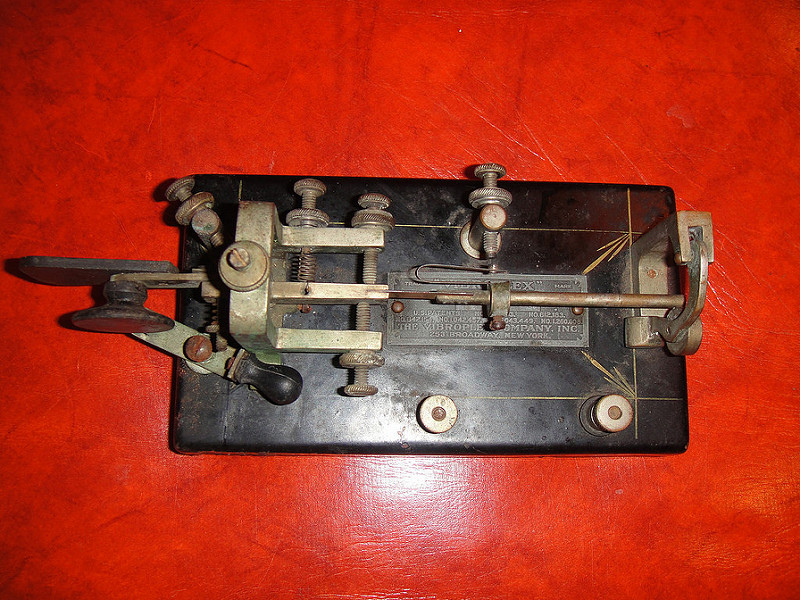
Vibroplex original with plate C3, aprox. 1920. Have very loong "flower" design.
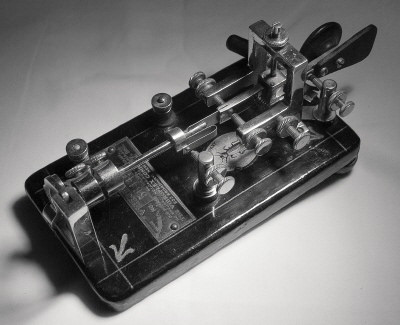
Vibroplex orignal with plate C3, aprox. 1920. Very "fat flower" design.

Vibroplex Original 100 Anniversary - 2004, latest design from Virboplex.
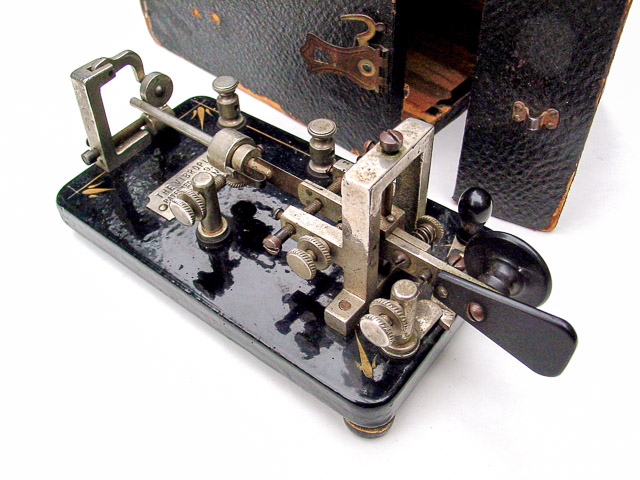
Vibroplex Early Martin Junior plate A1. 1906 - KN6W.
Note the design of "flower" is like a Early Martin junior of first photo under.
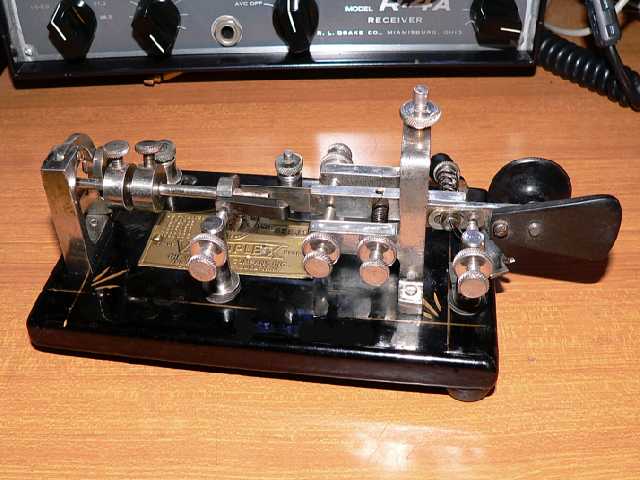
Vibroplex Original plate D, 1923.
Note the design of "flower" very thin
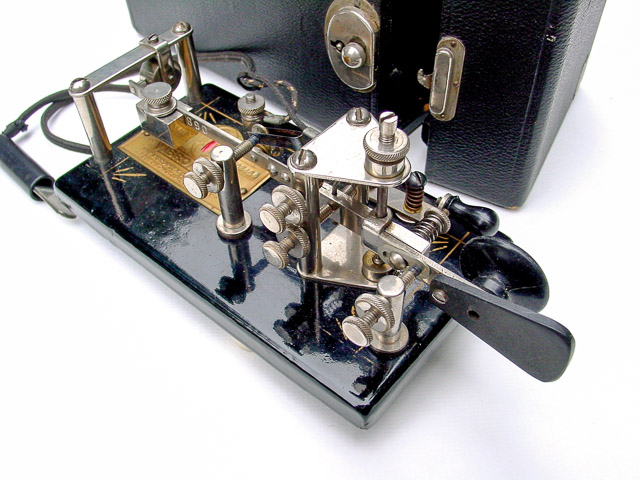
Vibroplex Lightning, plate D. 1929 - KN6W.